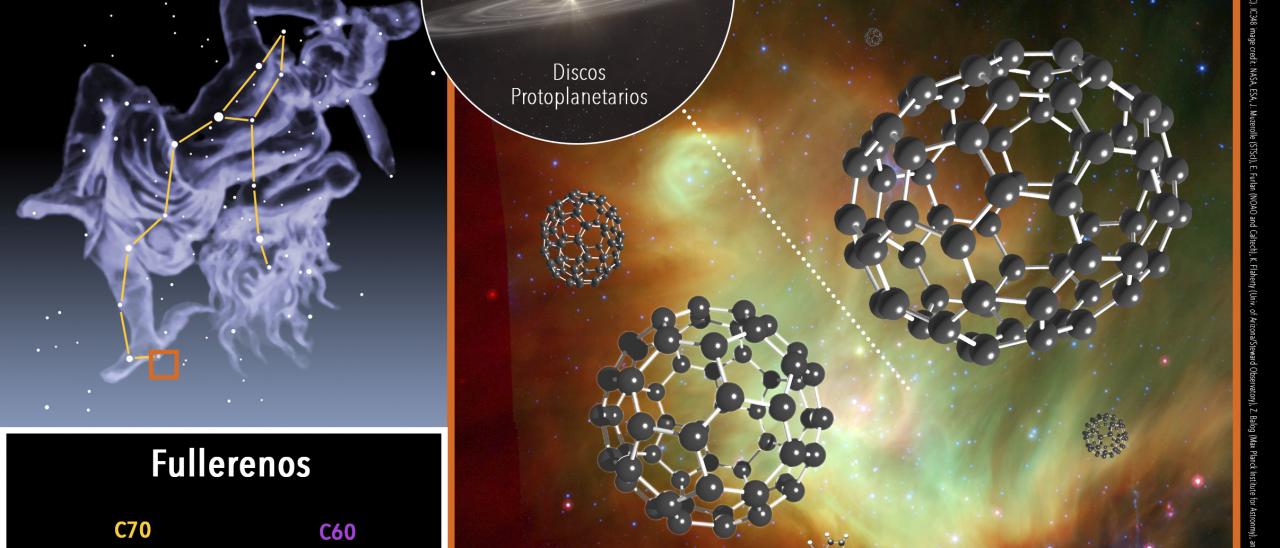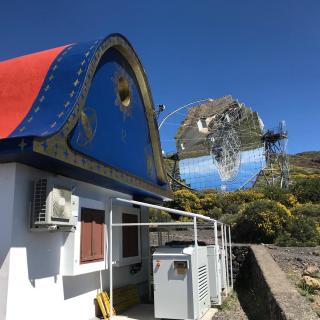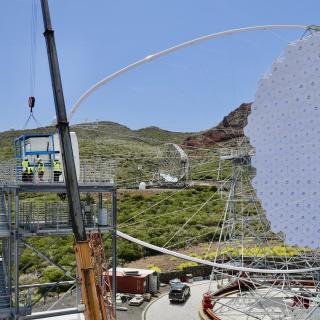A study carried out by IAC researcher Susana Iglesias-Groth has detected molecules of pure carbon in one of the nearest star formation regions to the Solar System. The results of this work have recently been published in the journal Monthly Notices of the Royal Astronomical Society.
Fullerenes are carbon molecules, whose structure contains pentagons and hexagons, which often appear in key molecules for life. They are also the third most stable form of carbon, togetherdiamond and graphite. A study performed by the researcher at the Instituto de Astrofísica de Canarias (IAC) Susana Iglesias-Groth presents the detection of Fullerenes in the interstellar medium of the star formation region in Perseus. In particular, in IC 348, a cluster of stars with ages from 2 to 3 million years. This is one of the star formation regions nearest to the Solar System, where there are many protoplanetary discs in which there are, very probably, planets being born. The presence of Fullerenes might have an effect on the chemistry of these forming planets.
“I have detected the C60 Fullerene but also the C70 Fullerene which is far less frequent”, says Susana Iglesias-Groth, who is the single author on the paper. “ This is the second reliable known detection of C70” she adds, “ the most complex molecule detected in the interstellar medium up to now”.
The Fullerenes are molecules consisting only of carbon, whose shape, similar to that of a football in the case of C60 and more like a rugby ball for C70, gives them outstanding stability, making them highly resistant to radiation fields and even to bombardment by highly energetic particles, both phenomena normally present in regions of star formation.
The detection by Iglesias-Groth is based on the identification, in data taken by NASA’s Spitzer satellite, of the vibrational transitions in emission in the middle infrared of both of the Fullerenes, C60 and C70, in the spectra of stars with protoplanetary discs, and in spectra from several interstellar sites distributed around the IC348 region.
The IAC researcher explains that “The Fullerene bands seem to be widely distributed in this region, and are strongest along the line of sight towards the stars in the centre of the cluster” This work also contains te possible detection of the ionized forms of C60, of both the cation and the anion, which could make up between 20% and 10% respectively of the total of C60 fullerenes within the region.
“The estimate of the abundance of Fullerenes“ continues Iglesias-Groth, “ turns out to be consistent with those measured in the regions where they are produced, mainly in the nebulae around stars like the Sun in their late stages of evolution which often give rise to the nucleosynthesis of large quantities of carbon. These molecules are very robust, and can survive multiple impacts of high energy radiation and particles, to which they are subject during their interstellar journey to the regions where stars and planets are born”
The stars in question in IC 348 harbour protoplanetary discs. Although the observations clearly show their presence in the interstellar medium the spacial resolution of the spectra is not sufficient to establish the presence of Fullerenes in the protoplanetary discs. “The next step will be to use the future, and much more powerful, JWST space telescope to find out the quantity of Fullerenes there may be in the discs of material where planets are forming “ states Iglesias-Groth.
If the abundances of Fullerenes in the cloud were representative of the protoplanetary discs, the C60, which is the more abundant of the two species, could comprise 0.10% of all the carbon available in the discs. This should encourage us to look for it in young discs using telescopes such as the JWST. The Fullerenes offer a reserve of pentagonal and hexagonal rings of carbon atoms, which could be important as building blocks of pre-biotic molecules. The accretion of these robust molecules in early phases of planets could contribute to the formation of complex organic molecules in young planets.
Contact:
Susana Iglesias-Groth: sigroth [at] iac.es">sigroth [at] iac.es (sigroth[at]iac[dot]es)



